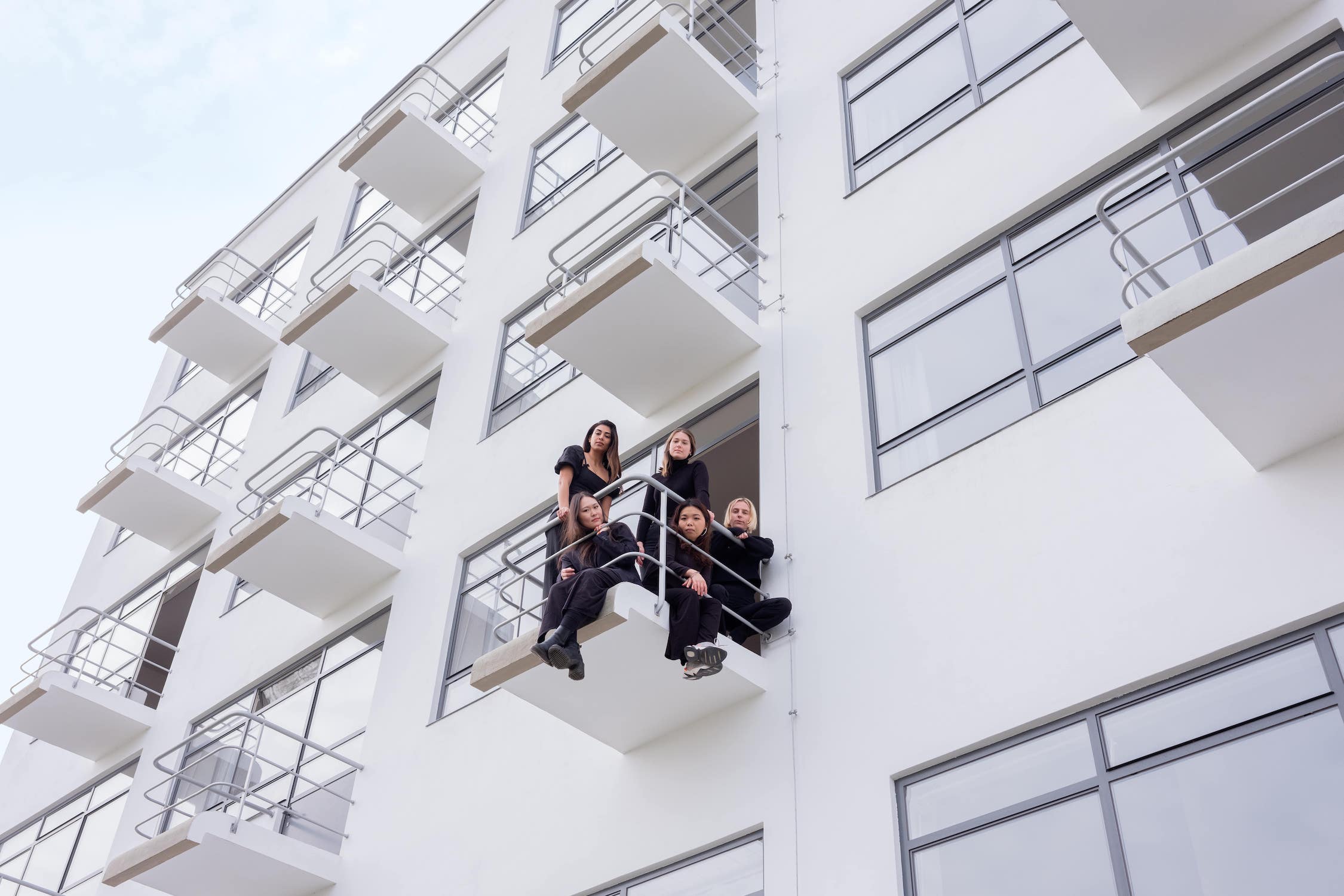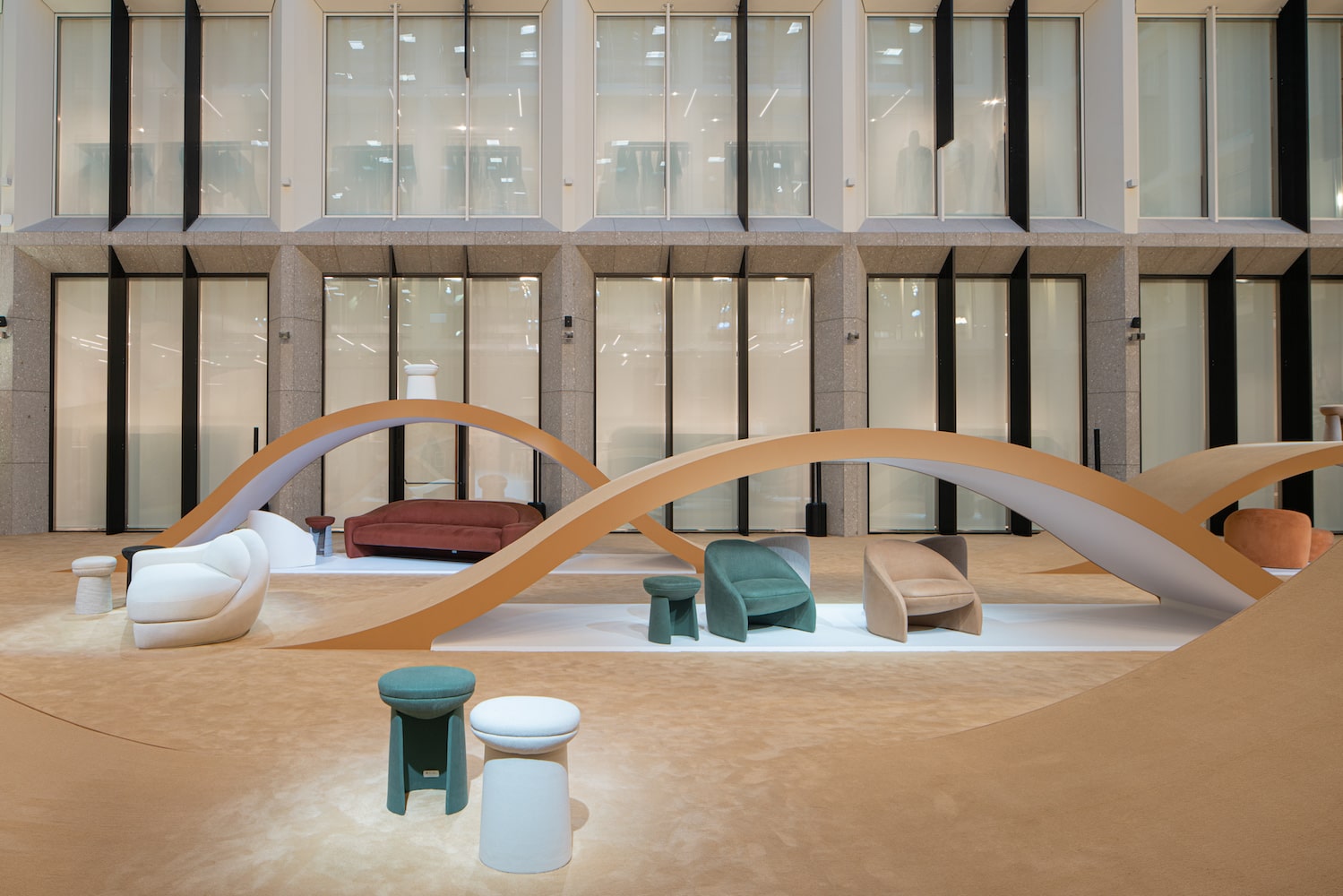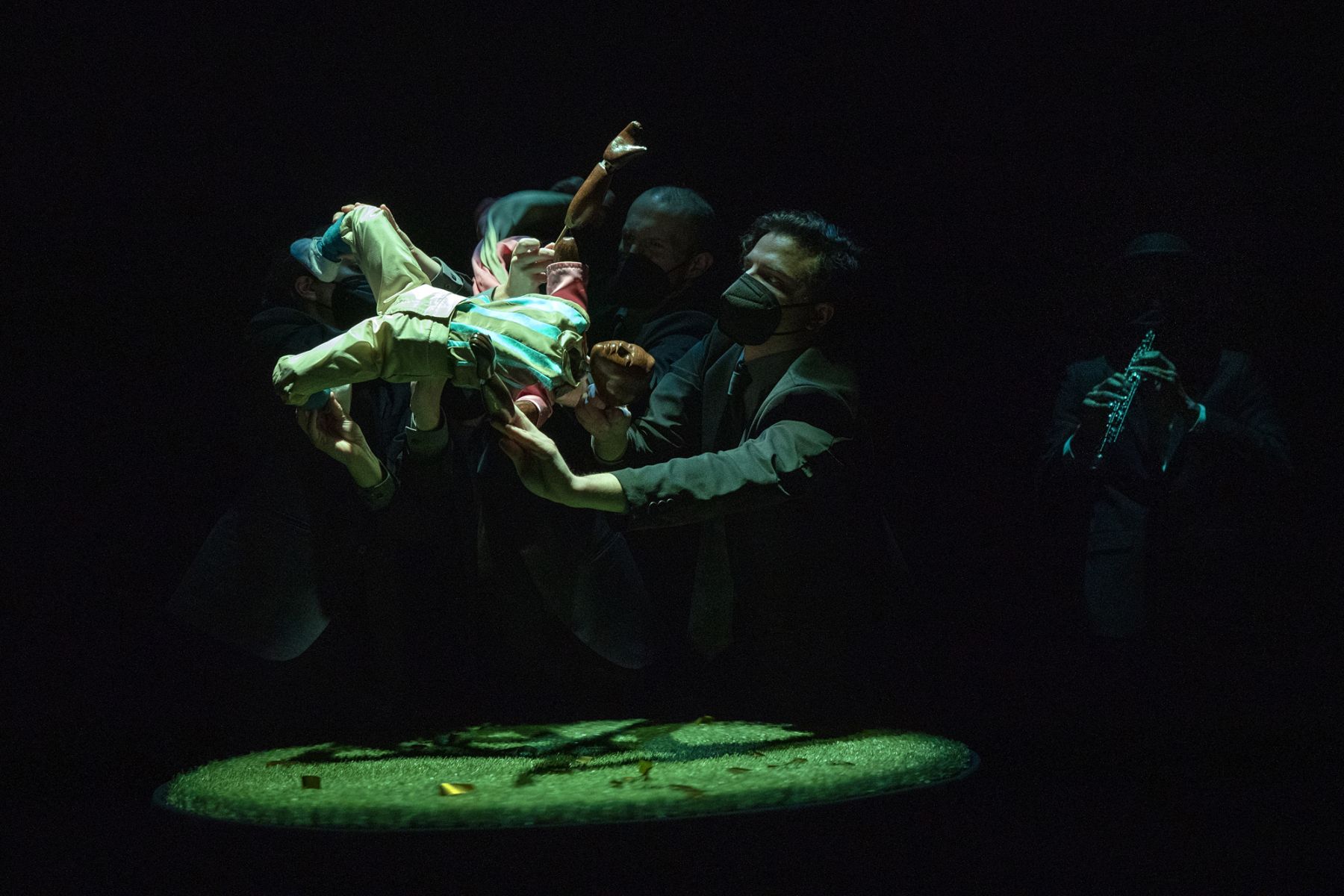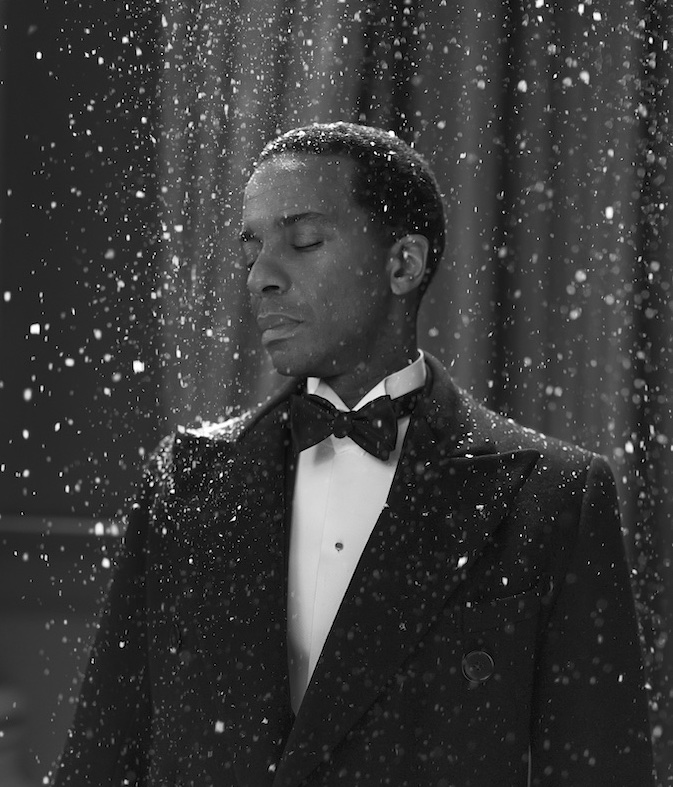Designer Sabine Marcelis recently teamed up with Swiss luxury skincare house La Prairie for the Women Bauhaus Collective, a mentoring project inspired by the female creatives of the Bauhaus school whose contributions to the movement went unrecognized or were overshadowed by their counterparts of the opposite gender. While women made up a good portion of the students active in the pioneering design school, the culture of the male-dominated early 20th century resulted in some of their names and innovations being lost to history.
The Women Bauhaus Collective launched by La Prairie, as well as ongoing research and initiatives by the Bauhaus Dessau Foundation, are helping to rectify and rewrite that story. Inspired by the legacy of harmony emphasized by the Bauhaus—of which balancing form and function was paramount—the project paired Marcelis with five emerging talents from top design schools around the world: ECAL in Switzerland, the Ecole des Arts Decoratifs in Paris, Central Saint Martins in London, the Design Institute in Hong Kong, and The School of Design Institute in Chicago. Over the course of a year, the renowned Rotterdam-based designer mentored Lauren Januhowski, Jasmine Deporta, Kristin Chan, Gloria Fan Duan, and Talia Golchin as they created digital artworks inspired by the spirit of harmony, with the resulting pieces to be discovered in a virtual exhibition on La Prairie’s website.
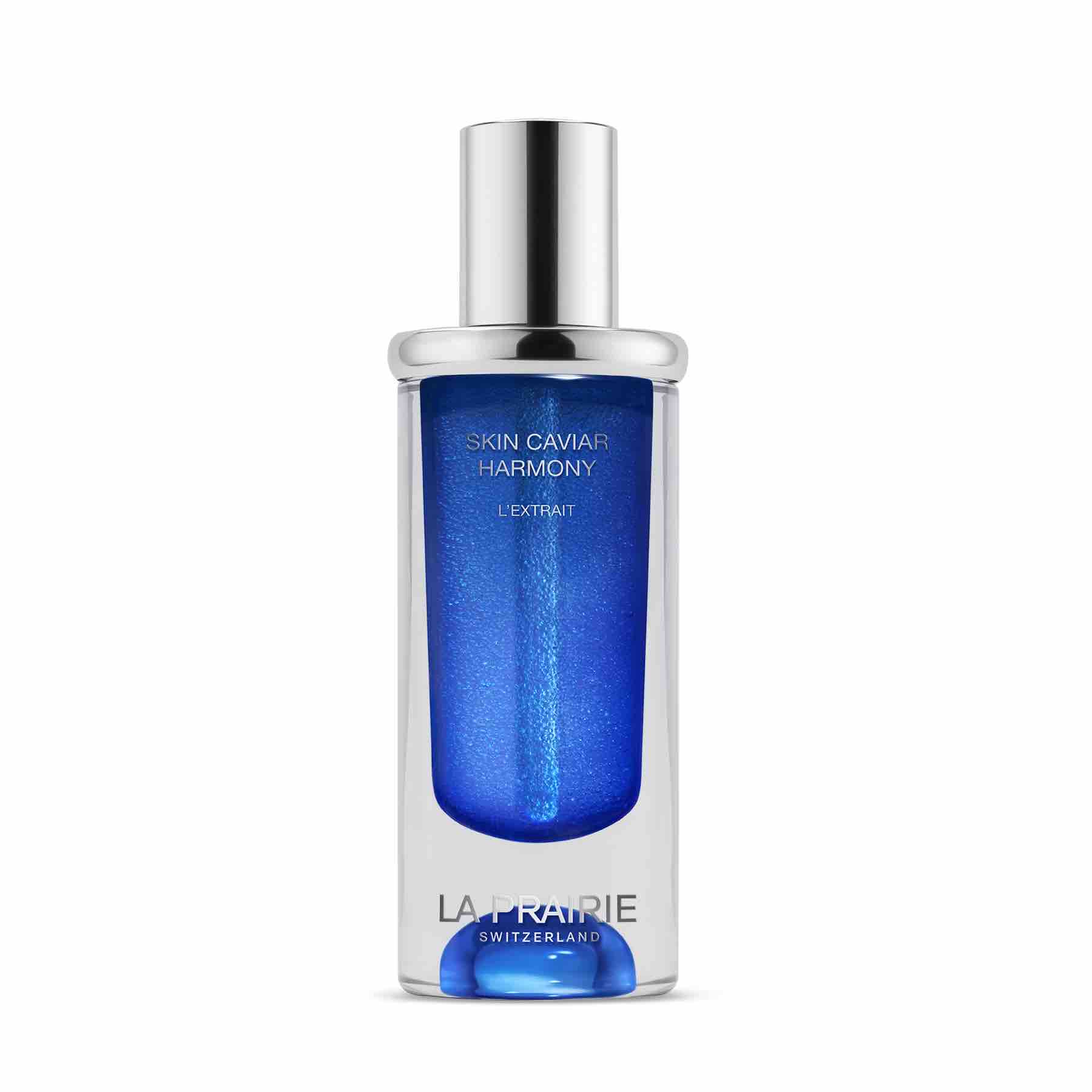
La Prairie’s latest creation, Skin Caviar Harmony L’Extrait.
The theme of harmony stems from the concept of the Gesamtkunstwerk, which translates to “total work,” an idea that the sum is greater than its parts. Connecting via screen in group sessions or one-on-ones with Marcelis, the five artists later gathered in person at Staatliches Bauhaus in Dessau. After experiencing the historic Walter Gropius–designed site, and even getting to stay in the former student housing, they traveled to Rotterdam to visit Marcelis’s studio. There, they worked to bring their digital designs to life with real-world materials.
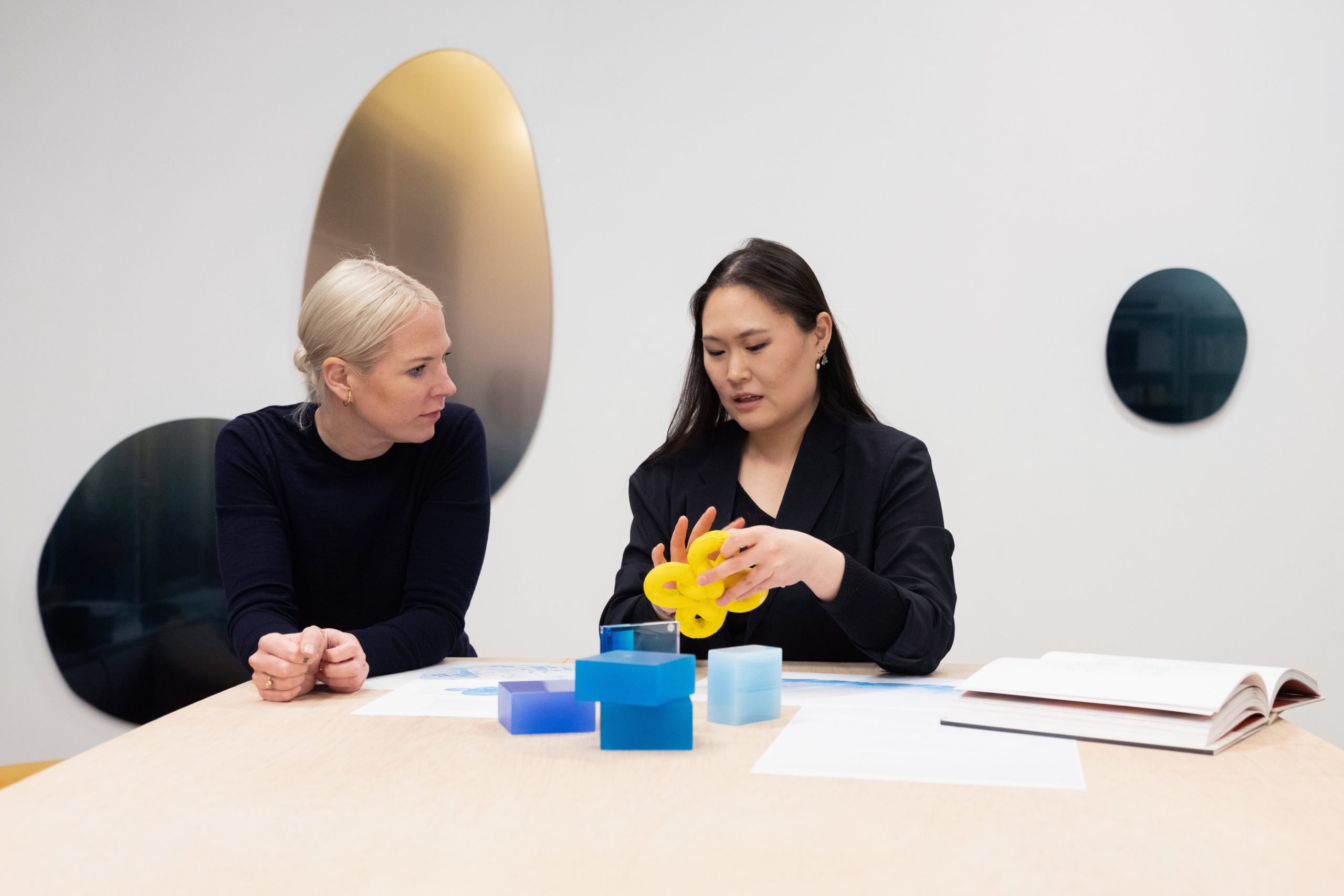
Designer and mentor Sabine Marcelis with artist Gloria Fan Duan, photo by ©Titia Hahne.
Founded in 1919 in post–World War I Germany, the Bauhaus school embraced modern technology, following the belief that form follows function. Its aesthetic principles—finding balance in composition, material, and craft—and innovation have had a far-reaching and long-lasting impact, including being a mainstay reference for the Swiss luxury skincare brand La Prairie, in both its approach to packaging and its pursuit of timeless beauty. In fact, Bauhaus’s concept of the “total work” inspired La Prairie’s latest addition to the Skin Caviar Collection, Skin Caviar Harmony L’Extrait, whose sleek design in cobalt blue marries modernism with the latest scientific breakthrough centered on skin ligaments—skin’s vertical pillars. Skin ligaments are directly correlated to essential elements of facial harmony, and are as of yet unaddressed by skincare. In pursuit of the harmony of youth, La Prairie created a new innovative ingredient, Caviar Infinite—the result of 35 years of Caviar Science. Caviar Infinite is infused in the new Skin Caviar Harmony L’Extrait which opens a new chapter in the science of lifting and firming.
Just after La Prairie’s presentation at Art Basel in June, Whitewall spoke with Marcelis about mentoring the five young creatives in reinterpreting the pursuit of harmony and women of Bauhaus.
WHITEWALL: What made you interested in collaborating with La Prairie and mentoring this group of emerging talents?
SABINE MARCELIS: I teach at ECAL, the school in Lausanne, Switzerland, and the first project I did together with La Prairie was for a group of students to create these beautiful installations that represented La Prairie and Swissness. I really enjoyed that process.
I’m very inspired by Bauhaus, so when I was asked to mentor this great group of female artists, it was a no-brainer to say yes. I’m a little bit further in my career, and I have a lot of knowledge. I messed up a lot as well, and it’s nice to be able to pass on some things where maybe they don’t need to make those same mistakes. It’s tough to be a female starting your career in the arts. So it’s been really a lovely project to be a part of.

Bauhaus Building by Walter Gropius, Dessau, Germany, photo by ©Titia Hahne.
WW: How has the Bauhaus school inspired you?
SM: I very much resonate with the idea within Bauhaus that everything has to be efficient and stripped back to its essential core. You find meaning within minimalism—stripping away any kind of decorative elements. I very much do that with my work. I focus in on one key element which might be a material effect or a certain lighting moment, and the whole shape and the way that the object is produced is to highlight that singular thing. There’s no embellishing or unnecessary things around. It’s very much stripped to its essentials.
What was also very pioneering at the time was that you didn’t have to be stuck to one discipline as an artist or a designer. And I like this idea of working together, and one discipline informing the other, and finding these cross-inspirations within these collaborations.
WW: In this process, were there stories of women in Bauhaus that you knew or any discoveries for you along the way?
SM: I was surprised by the amount of students that were female at the Bauhaus. You just never heard about it, really. And even in my studies, there are a few key figures that everyone knows, like Marianne Brandt, but there’s a whole forgotten group of students that were part of that movement. And that was very much the sign of the times when the male figures within collaborations would get the sole recognition.
Within the auditorium at the school, which is a very interesting space, the seating is historically known as designed by a male designer, Marcel Breuer. But the textile was done by one of the female Bauhaus women, Gunta Stölzl. It’s super revolutionary because it’s very thin but tough, and very engineered. It doesn’t just look good aesthetically. It’s a material science project.
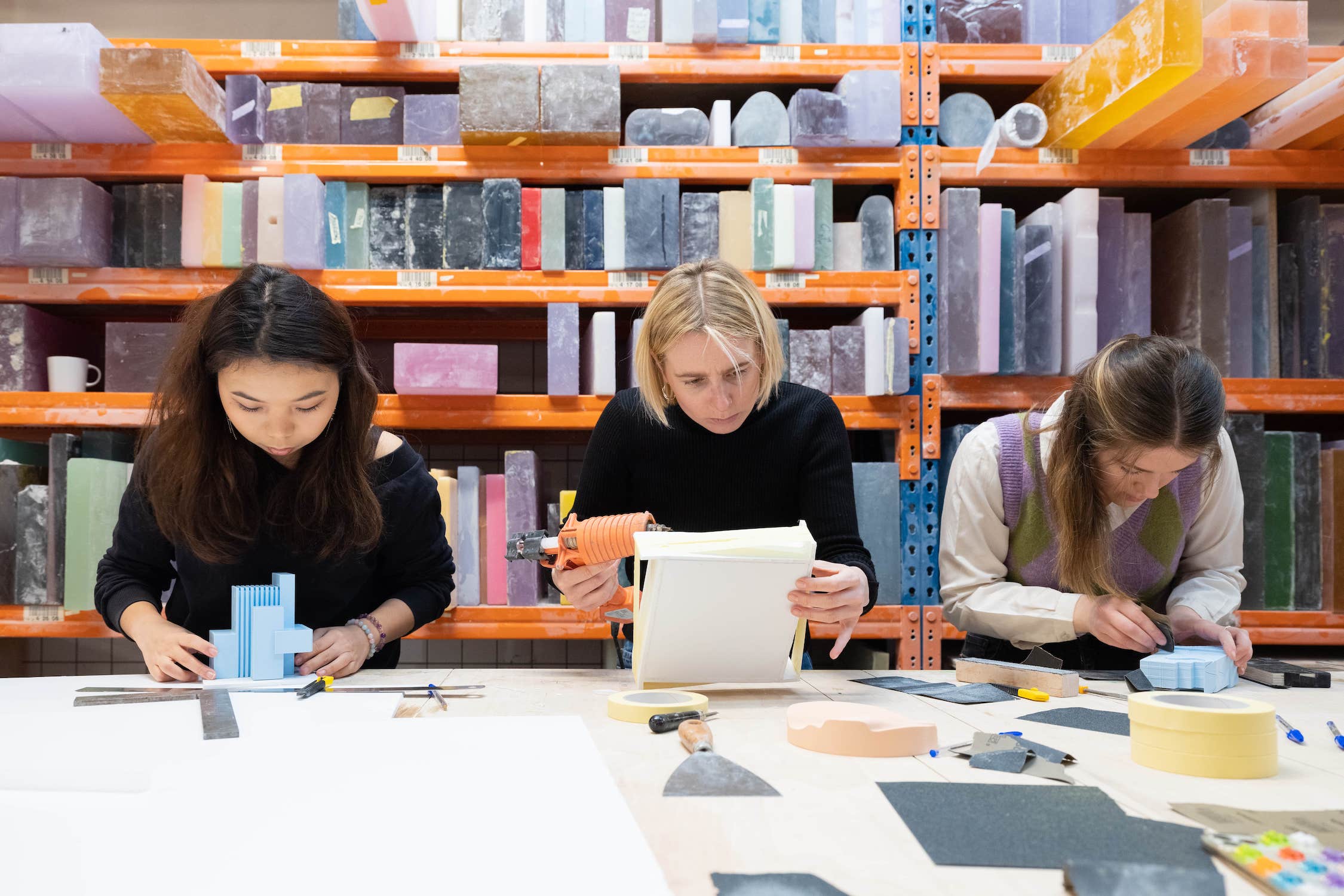
Artists Kristin Chan, Jasmine Deporta, Lauren Januhowski, from the Women Bauhaus Collective, photo by ©Titia Hahne.
WW: Can you tell us about the process of mentoring the five artists, Lauren Januhowski, Jasmine Deporta, Kristin Chan, Gloria Fan Duan, and Talia Golchin?
SM: The group of five artists was selected on the quality of their work, but also very much taking into account their diverse backgrounds geographically, culturally, and the medium in which they work. The whole project, in the beginning, was done via screen, so we got to know each other through the computer with some group conversations but also a lot of one-on-one. And then we met in person at the Bauhaus in Dessau. That was the first time we all met each other, which is quite a magical place for that to happen. We also stayed in the old student apartments. It was really, really cool.
Then we drove from Dessau to my studio in Rotterdam. Most of their projects were already near finished within the digital space—they will be presented in an online gallery. But then I wanted to take them out of the digital world and translate what they designed there into small, physical representations of it. In my studio, we created these small sculptures. I think the act of working together physically, assisting each other, and being in one space creating something, there was something really powerful about that. I feel that everyone loved that moment as well. You had nothing at the beginning of the day and at the end of the day, you have all these results. And you revisit it the next day. We really felt it was a connective effort.
There was also this feeling of it being a little bit like what it would have been like for those women in the Bauhaus. There’s something very freeing about being in the real world together.
WW: And I imagine seeing the collaborative spirit of your studio was important to witness, too! How were you thinking about that harmonious spirit of the Bauhaus in this project?
SM: I am the face of my studio, but I have a whole team and a whole production behind me. That’s also a collaborative effort and that was probably nice for them to see—that you don’t have to do everything by yourself. You work together and you collaborate on a daily basis, even though it might not seem like it.
That togetherness was a really big part of that. It was interesting to see how each of the artists thought about harmony in a very specific, individual way. For example, for Kristin, it was about you finding your own harmony within her project. She created a framework that you can then interact with where you as an individual will define the perfect balance, the perfect harmony. Talia, for example, took it very internal. It was about the female body and the harmony of the cells.
It was my task to push them to stay true to their own idea of harmony. It wasn’t about creating a collective feeling of harmony. It was about how you interpret it and how can you best then push your idea. And that process was a harmonious thing because then everyone had the ability to be themselves within a group, within a collective.
WW: Is there something from the mentoring experience you’ll bring back to the studio?
SM: I think for sure the reminder of how important it is to stick to your own gut feeling. Witnessing how, in the process, some of the artists were really doubting what they were doing. You get on this sort of crazy search where you get a bit lost, and at the end of the day, they got back to the original first strong idea. I think that’s something that’s very underappreciated—that quite often your first gut instinct within a project is going to be the best. Obviously, it will need some development and fine-tuning, but to trust in that instinct, to be brave enough to say, this is my first idea and I’m not going to bother making five other alternatives. Let’s go with this.
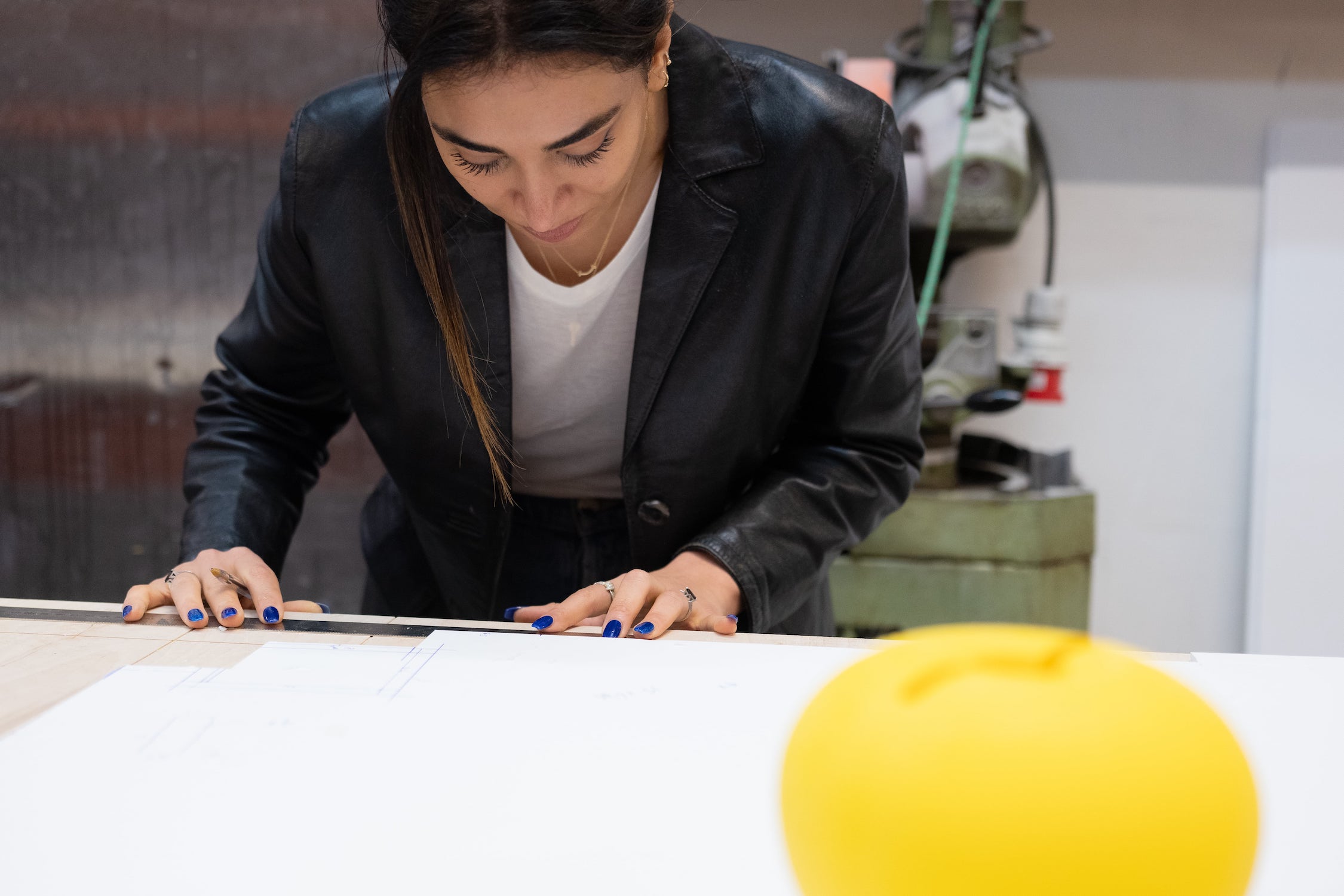
Artist Talia Golchin from the Women Bauhaus Collective, photo by ©Titia Hahne.


